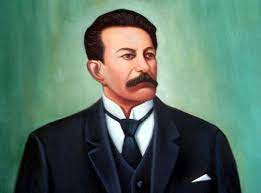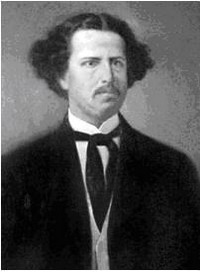
Havana ephemeris. August 2nd.
Graphic worker's day.

This day is commemorated on the occasion of the anniversary of the birth of Alfredo López Arencibia, teacher of the Cuban proletariat and graphic worker.
He was the inspirer, organizer and guide of the working class.
His birth occurred in 1894 in Sagua la Grande.
From a very young age he began to work in a typographic workshop. He later moved to live in Havana where he got a job at the La Mercantil printing house. It is there that he met the trade union struggles of the workers to improve their working conditions.
At age 19 he was one of the founders and leaders of the Typographers Association. He stands out in the formation of the Workers' Federation of Havana and then later in the National Workers' Confederation of Cuba.
For his confrontation with the dictatorial government of Gerardo Machado, he was arrested, tortured and murdered in the dungeons of the Atarés Castle on July 20, 1926. His remains were found, after the overthrow of the Machado dictatorship, in 1933, on the slopes of said fortress.
1886. Manuel Vargas Machuca y González del Valle dies in Havana.
Born in Havana on January 7, 1834, he studied at the Royal and Pontifical University of San Gerónimo de La Habana, where he obtained a bachelor's degree in Philosophy (1852), and a bachelor's degree in Pharmacy (1856).
He subsequently traveled to Madrid, where he studied for a doctorate in Pharmacy and later moved to Paris, where he lived for six years. Among his works, the one referring to the transformation of potassium permanganate had special significance.
In Cuba he was a full member of the Royal Economic Society of Friends of the Country, Member of Merit of the Circle of Landowners, as well as a member of the Superior Board of Health.
1914. Enrique Hernández y Miyares dies in Havana.

He developed extensive work as a journalist for years in multiple publications. Almost a teenager, he started in journalism with Diego Vicente Tejera. He collaborated in the press as an editor, proofreader and writer.
He struggled to achieve what is truly Cuban in literary and artistic creations.
In 1895, in the United States, he was part of the editorial staff of the newspaper "Patria" and directed the weekly "Cacarajícara".
Born October 20, 1859
1914. María de los Ángeles Santana is born in Havana.

She was an actress and lyrical singer who, through her existence, gave prestige to Cuban culture.
With her great charisma, she developed an extensive and fruitful artistic career in cinema, theater, cabaret, radio and television. Her own personality, refined technique when singing, exceptional histrionic qualities and exquisite human sensitivity, characterized this legitimate Cuban woman.
She died on February 7, 2011 in Havana
1915. Colonel of the Cuban Liberation Army Manuel de Jesús Peña Reinoso, a combatant in the Ten Years' War, dies in Havana, now in his eighties.

He was elected representative to the House for the East. He served as secretary of that body until May 1873, when he went abroad, sent by President Carlos Manuel de Céspedes. He returned to his country where he became Minister of the Interior in 1876.
In 1880 he was a deputy to the Constituent Assembly. He directed various educational centers from 1895 to 1907, when he returned to Cuba. His military rank is not specified because he does not appear registered in the ranks of the Liberation Army.
Later, he was Minister of the Interior, deputy, and directed several educational centers in his country, the Dominican Republic. He had been born in Santiago de los Caballeros in 1833.
1942. Juan Formell is born in Havana.

He was an outstanding composer, double bass player, arranger and conductor. His name began to gain popularity in 1968 when he was part of the Revé Orchestra.
In that group he created works and arrangements that transformed the traditional style of charanga.
At the end of the following year he founded the Los Van Van Orchestra, with which he performed successfully for more than 40 years both in Cuba and in various parts of the world.
He passed away on May 1, 2014 in Havana.
1958. Conrado A. Duany Pulido is assassinated in Havana.

His funeral took place on August 5 of that same year, accompanied by a multitude of friends, colleagues and relatives. Weeks of mourning was for the San Miguel del Padrón neighborhood that saw him grow up and knew of his efforts.
He was born in the Atarés neighborhood in Havana on February 19, 1940.
He was part of the executive of the Institution of Progressive Youth of the black race, in the "Social Union of San Miguel del Padrón" and of the Ajef Lodge "Lino Dou".
He made himself felt in the revolutionary activities as a member of the July 26 Movement, which guided the clandestine activities in the Action and Sabotage Section in Havana.
He is considered the representative patriot of the municipality of San Miguel del Padrón.
1961. Commander Ernesto Che Guevara at the head of a Cuban delegation leaves from Havana to Montevideo, Uruguay, with the aim of participating in the Conference of the Inter-American Economic and Social Council.

Due to the bad weather conditions that existed in Montevideo, the plane had to land in Rio de Janeiro, Brazil, where it remained for two days.
1991. Commander in Chief Fidel Castro in a brief speech in Havana inaugurates the XI Pan American Games.
He expresses: “Distinguished guests, athletes, compatriots, declared the XI Pan American Games opened. Thank you very much.
The competitions also had the city of Santiago de Cuba as a venue.
The sporting event was extended until August 18.
More than six thousand athletes participated, representing 39 countries.
Before the beginning of the sporting events, 39 trees were planted. The planting took place in the Pan-American Friendship Forest, at the entrance of the Pan-American Village.
The official logo of the event presented the initials of the words Games (J) and Pan American Games (P), with the colors of the Cuban flag, forming an original figure that transmitted an image of continuous movement. The Topocan was the mascot of the games.
